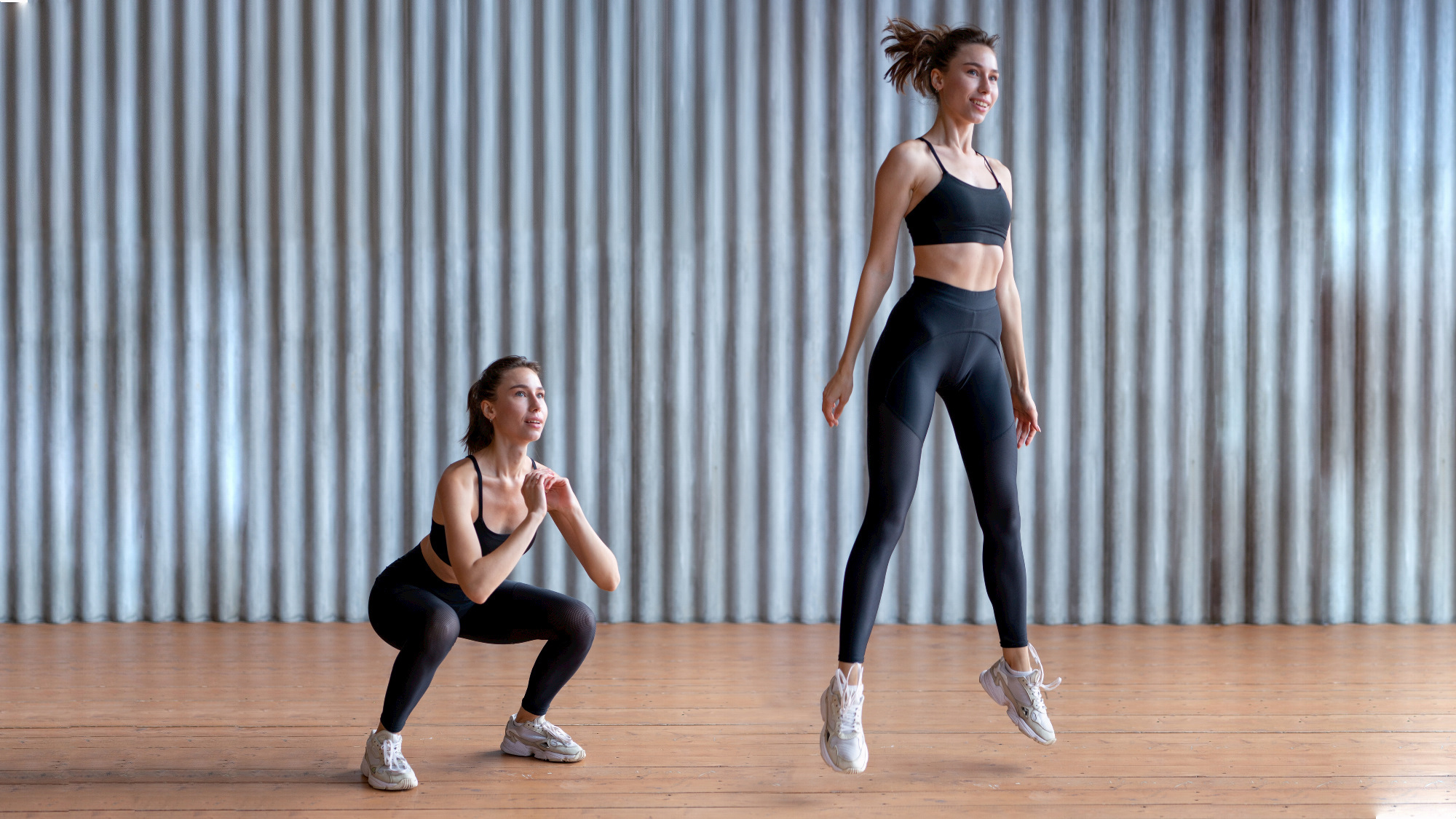
It’s the calisthenics workout I didn’t know I needed — who knew that 90 frog jumps every day for a week could drill my legs so hard using one bodyweight exercise?
Like squat jumps, frog jumps use explosive movement to develop lower-body stamina, power and strength. During the frog variation, you’ll tap your hands to the floor between your legs and, if you have space, jump forward rather than on the spot.
Looking for more ways to torch my leg muscles, I wrapped one of the best resistance bands above my knees, took a deep breath and got to it, jumping for 90 reps every day for a week like a frog, briefly reminding myself that I get to do this for work. Here’s what happened throughout the week and how to try it yourself.
How to do frog jumps
I recommend learning how to do squats first before jumping. If you have any injuries, including your lower back or joint problems, we recommend clearing this exercise with a qualified medical professional first. As a personal trainer, I ask clients who experience joint pain and lower back injuries to avoid frog jumps, as explosive movements can exacerbate symptoms through excessive loading. Good to go? Here’s how to do it.
How:
- Start standing with your feet hip or shoulder-width apart
- Engage your core muscles and maintain a neutral spine and flat back
- Squat down as if sitting in a chair and tap your hands to the floor between your feet, then explosively jump upward so that both feet leave the floor and legs fully extend in the air
- Land into a deep squat with your heels planted, knees bent and thighs parallel to the ground, then tap your hands down again
- If you have space, jump forward each rep, landing into a squat with the weight distributed across your feet.
Never attempt to land the frog squat with straight legs, and always keep your chest lifted and butt drawn down toward the floor.
I did 90 frog jumps every day for a week — here’s what happened to my legs
We’ve tackled a few frog-related exercises at Tom’s Guide, including the 3-minute frog pose and frog squats, so how would I fare during this challenge?
My legs wouldn't stop shaking
I like to deadlift and back squat, and despite having not tackled squat jumps for a while, I thought my legs had this fitness challenge in the bank. Wrong. Despite the lack of weights, frog jumps use bodyweight power to torch your lower body, relying on an increased range of motion and flexibility through the hips, knees and ankles to sit deeper into the squat position and allowing you to tap your hands to the floor at the bottom of each rep.
You’ll then explosively spring upward and forward, landing just as deeply into each squat, rep to rep. You can build speed to increase cardiovascular effort or focus on height and distance to work on explosive leg power.
My legs were trembling after 90 reps on the first day and continued to shake just as aggressively for the remaining six. When I hit the first 30 reps each attempt, the desire to reduce my reps got stronger — but I held on.
It’s an efficient way to fatigue the legs
Jumping is a plyometric exercise and can build speed, power, strength and stamina in your legs and glutes. Athletes and sportspeople often use plyometric training within their strength and conditioning programs. Not only to improve agility or jump height but to help the body cope better at using elastic energy.
Your fast-twitch muscle fibers are responsible for explosive movements like sprinting and jumping, so including these movements can help train the relevant muscle fibers to produce this type of movement with less effort.
The research shows that plyometrics could build strength, speed and muscle size and improve coordination, stamina and endurance, translating to better functional movement like climbing the stairs or running for everyday exercisers and increased athletic performance for sportspeople. Frog jumps challenge the power of your muscles, and boy, did 90 reps a day achieve that.
It tested balance
I decided to work on height and distance throughout the week, jumping as high as possible on the spot or jumping for distance when performing my reps in the gym. I also used a loop band above my knees to increase muscular engagement, making the frog jumps even harder. As I jumped forward, I initially felt wobbly and noticed I wanted to land toward my toes.
The key to frog jumps is to nail the landing — fully footed with the knees bent to help absorb shock. Knees shouldn’t turn inward, and both feet should land at the same time, with the weight distributing evenly across the feet. Once I drilled down on technique, the reps became more fluid, and I could build speed and distance while pushing against the band to prevent my knees from turning in.
I did 90 frog jumps every day for a week — here’s my verdict
Frog jumps could help develop lower body strength and flexibility and translate to improving other exercises like box jumps or sprinting, but if you suffer from bad knees, I would skip this exercise and focus on developing your squat form instead, gradually increasing the load as you build strength.
What did I take away from doing frog jumps every day for a week?
I could see myself adding the move to warm-ups and plyometric training sessions. The bodyweight exercise requires power and cardiovascular fitness, as well as building it. My legs needed a rest after a week's worth of jumping around the room, and although I initially noticed improved squat depth and felt looser around my hips, knees and ankles, unless you regularly work on developing flexibility and mobility, this is unlikely to last.
I wouldn’t recommend programming frog jumps every day. Your muscles need time to rest and recover, especially after a plyometrics session. Instead, find a mobility routine you can trust, and add plyometrics into your training regime with rest and recovery factored in. We’ve got some ideas below.







